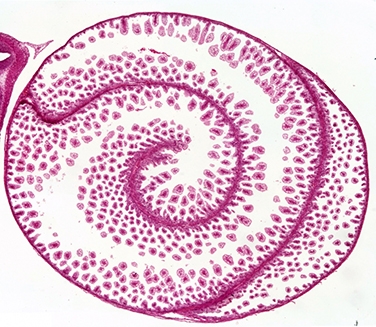ABSTRACT: Background: The evolution of organ asymmetries is less explored than the field of organ morphology and coiling. The digestive tract of elasmobranchs provides a fascinating model for studying the evolution of morphological asymmetries. Unique to elasmobranchs and all basal fishes is the spiral intestine, which may represent an intermediate morphology in evolution from the straight gut of lamprey to the elongated coils of higher vertebrates. The short spiral allows for a large absorptive surface area that can fit into a restrictive abdominal space.
Results
Using histology and high resolution microCT, we provide the first 3D morphometric analysis of the spiral intestine during development in the little skate, Leucoraja erinacea. Spiral formation is initiated by asymmetric growth in the mesenchyme, causing a bulging fold that protrudes into the lumen of the gut. As development proceeds, the fold elongates and spirals into a right-handed helix. Spiraling progresses along the anterior-posterior axis and is likely the result of mechanical forces driven by the asymmetric growth of surrounding tissues. After initial asymmetric growth, radial constraints from within the gut tube create constrictive forces further propagating spiraling.
Conclusions
We propose a model for potential biophysical mechanisms that direct the morphogenesis of the spiral intestine.


